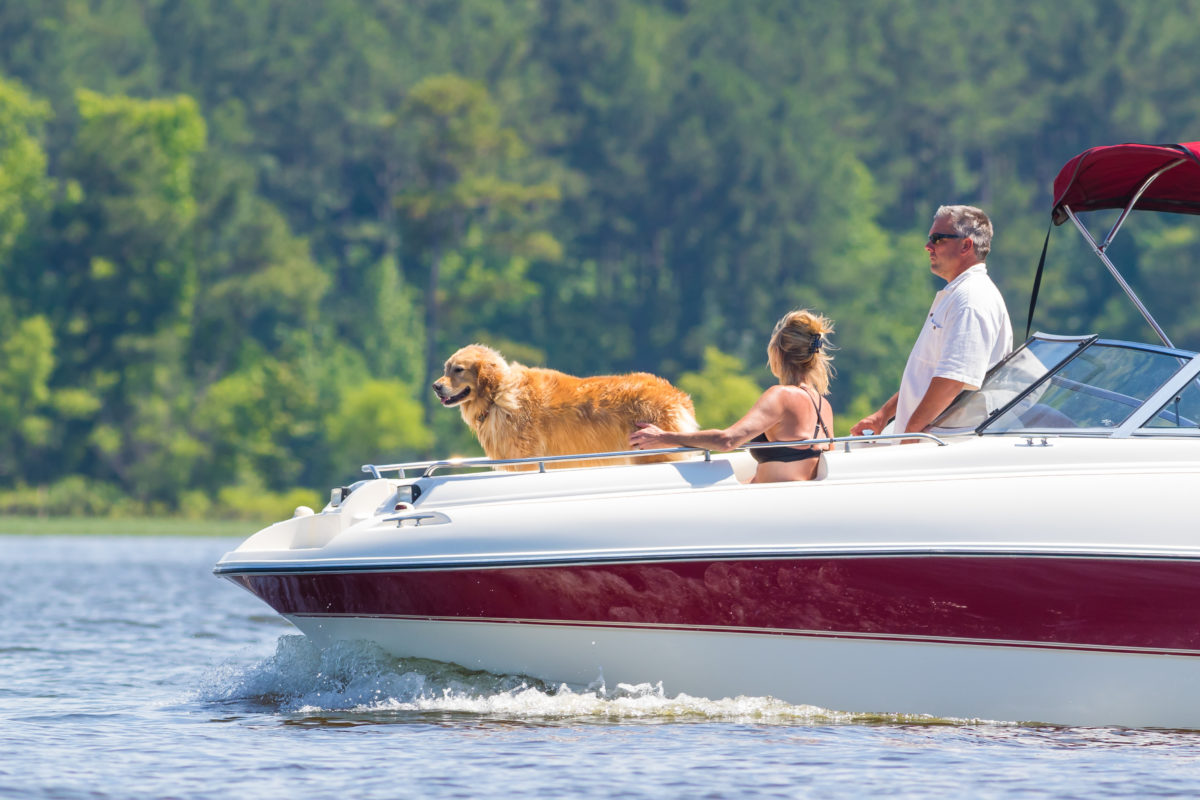Anyone who has ever boated in Lake Arrowhead knows how much fun there is to be had on the water. But as with any form of recreational boating, there are always things that can go wrong. Mitigating the risk of an event occurring while out on the water is a facet of being a skillful boat operator. So… how is this done?
Enter the ultimate boating checklist.
The Boat Operator
The boat operator needs to be prepared with his or her own checklist before hitting the water. This is everything they should have on their person to ensure that they are following rules and regulations, as well as providing a safe environment for themselves and their passengers.
☐ Documentation
It’s important to have all the correct documentation onboard. In addition to having a CA Boater Card, the boat operator must comply with Section C of the Boating and Swimming Rules established by ALA (Arrowhead Lake Association). Be sure to read this section thoroughly to understand what licenses must remain static on the boat.
As with any motorized vehicle, be sure to have the registration, insurance, and proper permits on hand.
☐ Life Jacket
The boat operator should always have a designated lifejacket. It’s all-too-easy to forget this when ensuring that everyone else on the boat has one.
☐ Protective Clothing & Sunglasses
Be sure to bring protective clothing and sunglasses. You do not want to have your vision impaired because of the sun, nor do you want to deal with harsh weather conditions (if these are to arise) without the proper protection.
☐ Handheld VHF
Bring a handheld VHF (very high frequency radio) device so you can hail the ALA for assistance
☐ Cellular Device
Be sure to have your phone with you in case of an emergency.
The Boat
The boat should contain all of the necessary equipment to ensure the safety of the passengers in the case of an emergency. When it comes to boating, preparation is everything. The American Boating Association states that “where cause of death was known (regarding fatal boating accidents of 2016), 80% of fatal boating accident victims drowned. Of those drowning victims with reported life jacket usage, 83% were not wearing a life jacket.”
We don’t mean to scare you with this statistic, only to showcase that by simply ensuring that each passenger has access to a life jacket, you can greatly reduce the risk of any fatalities occurring.
☐ Life Jackets
Be sure to include 1 life jacket per every 1 person on the boat. It should always maintain—at the very least—a 1:1 life jacket to passenger ratio. Including more than enough is always recommended in addition to a throwable ring or floatation device.
☐ Distress Signals & Sound-producing Devices
Be sure to bring a red flag, flares, and some form of sound-producing device; this can be anything from a whistle to an electric horn. If you want the full range of what the National Safe Boating Council recommends, then take a look at their checklist.
☐ Safety Equipment
This will often be dependent on the type of boating at hand (the list would take a different shape if, for instance, it was for someone boating deep in the Pacific Ocean). For Lake Arrowhead, see below:
- Flashlight
- Boat Lights
- First Aid Kit
- Food & Water
- Sunscreen
- Throwable Floatation
- Fuel
- Fire Extinguisher
- Alternate Propulsion (think paddle or an oar)
- Tools/Knife
- Rope
- Two-Way Radio
- Map of Lake Arrowhead
☐ General Equipment
While some items on the “safety equipment” list are going to be interchangeable with “general equipment” and vice versa, typically there’s a clear divide:
- Anchor & Line
- Boat Hook
- Dock Lines (don’t forget these!)
- Spare Parts (boat-specific but think batteries, hull plug, impeller, engine belt, anchor, etc.)
- Toolbox
- Engine oil
Again, the equipment checklist is often going to be specific to a given boat or type of boating.
Pre-Launch Checklist
The above items on the ultimate boating checklist are sound, but what happens when the boat just doesn’t start? Another facet to the checklist should be the creation of a pre-launch plan. This means testing the engine, preparing the boat, and ensuring that everything is going to run once the boat is in the water.
Of course, this is exceptionally important for those who have boats that haven’t run since the previous summer or before. But, as a rule of thumb, it’s important to:
- Check the engine and bilge for any leaks, breaks, or faulty connections
- Check your oil and fuel levels
- Check that the engine belt is tight and no signs of wear
- Check the battery connections and the electrical system
- Check your water intake strainer and clean if necessary
- Test all functions of bilge pumps
- Verify your navigation lights are working
- Verify your horn is working
- Make sure your engine starts, shifts into forward and reverse, and the steering is functional before pushing off the trailer or casting off from the dock.
Happy Boating!
With summer right around the corner and the earth blessing us with sunshine, we hope you have the most wonderful boating season! Be sure to utilize this checklist—or create your own—to ensure that you keep yourself, your passengers, and your boating neighbors as safe as possible.
Sources:
Safe Boating Council. Boater & Boat Equipment Checklist. Retrieved from: https://www.safeboatingcouncil.org/assets/docs/boatersequipmentchecklist-pb-26ft-8b.pdf
Arrowhead Lake Association. Boating and Swimming Rules. Revised by the ALA Board of Directors January 26, 2019. Retrieved from: http://www.ala-ca.org/docs/Boating__Swimming_Rules_with_map_1-26-19.pdf
Bell Performance. Pre-Launch Checklist for Maintaining your Boats Performance. https://www.bellperformance.com/blog/pre-launch-checklist-for-maintaining-your-boats-performance

